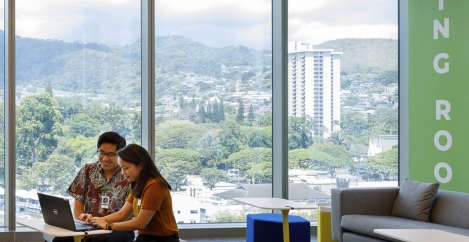September 4, 2019
Wellbeing depends on workplace basics more than trivial features
 A new report supports the idea that when it comes to the workplace and the effect it has on personal wellbeing and productivity, employees want the basics first. According to the Workplace Wellness Study published by Future Workplace, a New York-based research firm, and office technology provider View, the most highly prized features of an office are good air quality, access to natural light, and an ability to personalise immediate workspace.
A new report supports the idea that when it comes to the workplace and the effect it has on personal wellbeing and productivity, employees want the basics first. According to the Workplace Wellness Study published by Future Workplace, a New York-based research firm, and office technology provider View, the most highly prized features of an office are good air quality, access to natural light, and an ability to personalise immediate workspace.
According to the report, air quality and lighting are the most important drivers of performance, happiness, and wellbeing, while fitness facilities and technology-based health tools were seen as the most trivial. Half of the employees surveyed said poor air quality makes them drowsy while at work during the day, and more than a third reported up to an hour in lost productivity as a result.
The study data also suggests that the workplace is more important to employee satisfaction, engagement and productivity than most organisations realise. It found that around two thirds of respondents claim they are more productive in workplaces that promote a healthy environment. More than a third claimed that an uncomfortable environment that didn’t address their wellbeing had a significant negative impact on their work, across three factors:
- Physical Wellness: includes healthy activity and behaviors in the workplace, such as access to movement and ergonomics.
- Environmental Wellness: includes providing for physical comfort from air, light, temperature and acoustics in the workplace.
- Emotional Wellness: consists of the factors that create a stress-free workplace environment including culture, a connection to the outdoors and more.
The report argues that organisations should take five steps to improve employee wellbeing:
- Adopt an employee-centric view of workplace wellness. Survey your workforce to understand the
factors most important to them when it comes to workplace wellness. - Build a holistic workplace wellness plan. Real Estate and HR need to work together to create a shared vision and strategy for workplace wellness.
- Re-examine your workplace wellness investments. Focus less on opt-in perks like an on-site-gyms and more on areas that affect every employee, like the workstation.
- Build personalisation into your workplace wellness strategy. Employees expect the ability to personalise their workplace environment to best suit their physical and emotional needs at work.
- Monitor the connection between workplace wellness and employee satisfaction. Adapt a continuous improvement mindset as it relates to creating a workplace environment that mirrors an employee’s best consumer experience.













